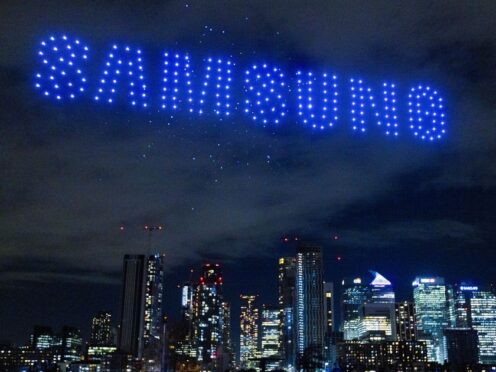
Samsung has regained its position as the top mobile phone-maker globally, having been beaten by Apple late last year, according to new figures.
The latest quarterly data from research firm IDC said overall global smartphone shipments increased 7.8% on this time last year, but Apple shipments dropped by nearly 10%.
As a result, Samsung has regained the top phone-maker spot, with a market share of 20.8%, ahead of iPhone maker Apple, which is second on 17.3% – after the two firms had switched places in the final three months of 2023.
Earlier this month, Samsung issued an update forecasting that its profits for the first three months of 2024 will be more than 10 times higher than the same period last year, in part driven by strong smartphone sales.
According to IDC figures, the resurgence of Chinese brands such as Huawei is driving the rise in overall phone shipments, but also taking market share from Apple.
Q1 2024 marks the third consecutive quarter of shipment growth for the worldwide smartphone market, a strong indicator that a recovery is well underway. https://t.co/KXkfbp65RZ pic.twitter.com/DnSQBB9cgl
— IDC (@IDC) April 15, 2024
Another Chinese brand, Xiaomi, is in third spot on 14.1% market share, with its shipments having risen nearly 34% on the same period last year, while Transsion and Oppo – two more Chinese firms – completed the top five.
The figures suggest that total phone shipments for the first quarter of 2024 were 289.4 million, up from 268.5 million in the same period last year.
Nabila Popal, research director with IDC’s worldwide tracker team, said: “The smartphone market is emerging from the turbulence of the last two years both stronger and changed.
“Firstly, we continue to see growth in value and average selling prices (ASPs) as consumers opt for more expensive devices knowing they will hold on to their devices longer.
“Secondly, there is a shift in power among the top five companies, which will likely continue as market players adjust their strategies in a post-recovery world.
“Xiaomi is coming back strong from the large declines experienced over the past two years and Transsion is becoming a stable presence in the top five with aggressive growth in international markets.
“In contrast, while the top two players both saw negative growth in the first quarter, it seems Samsung is in a stronger position overall than they were in recent quarters.”

Enjoy the convenience of having The Sunday Post delivered as a digital ePaper straight to your smartphone, tablet or computer.
Subscribe for only £5.49 a month and enjoy all the benefits of the printed paper as a digital replica.
Subscribe